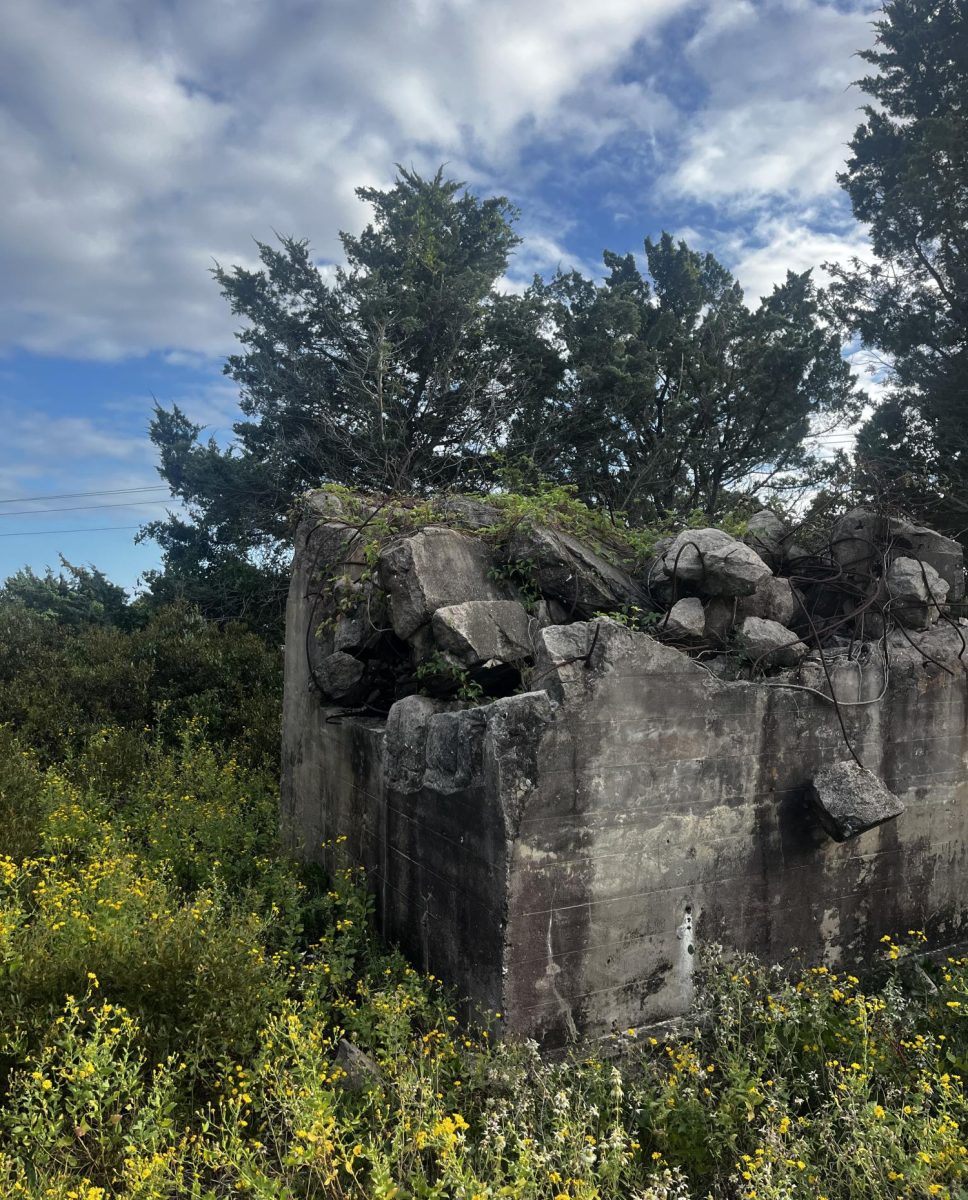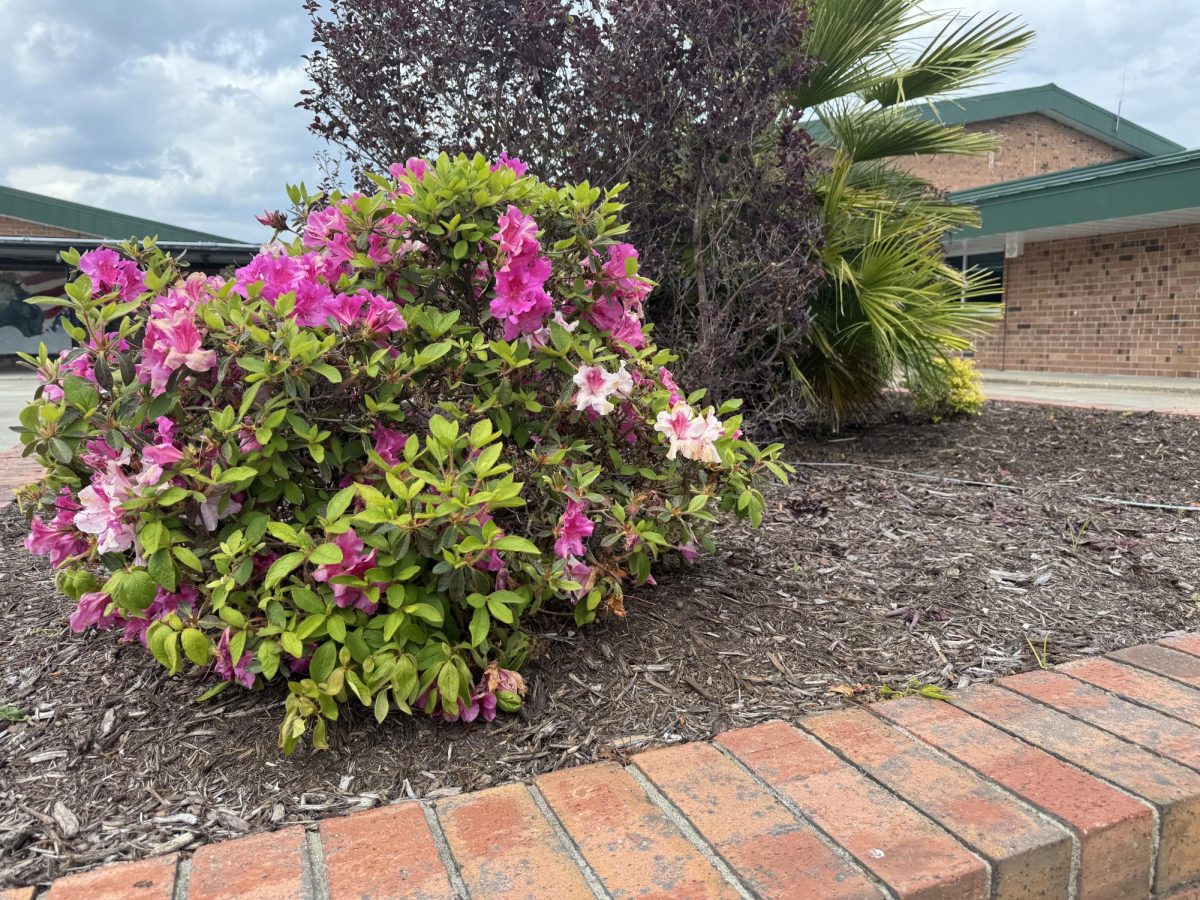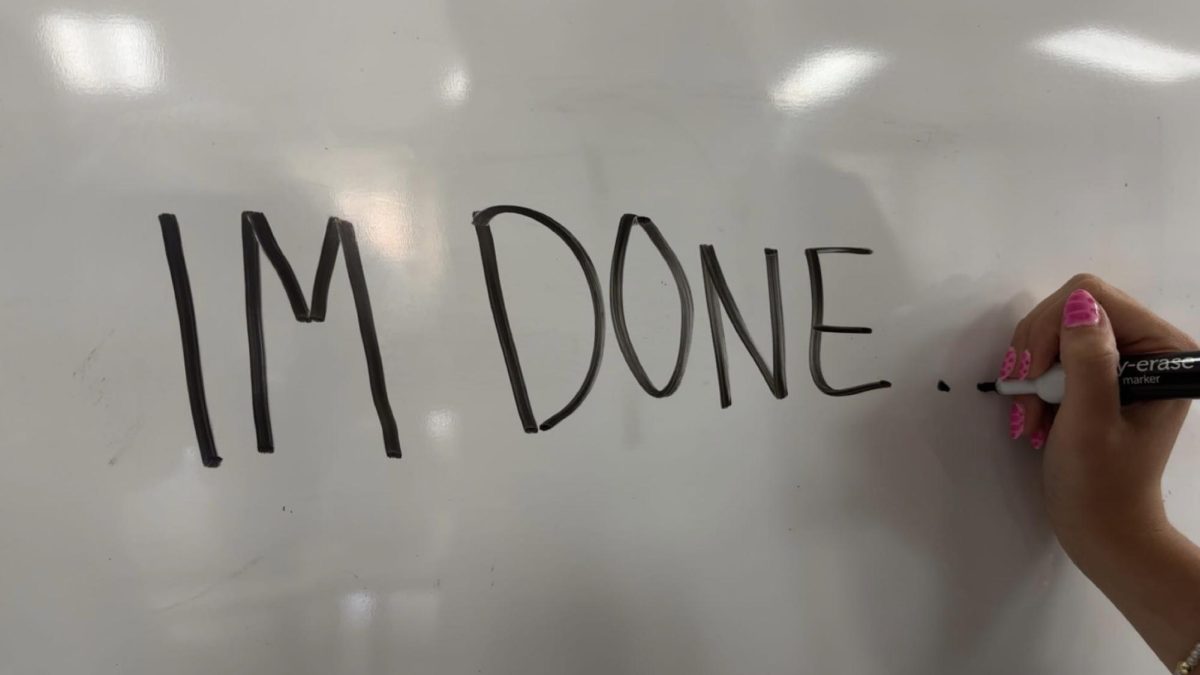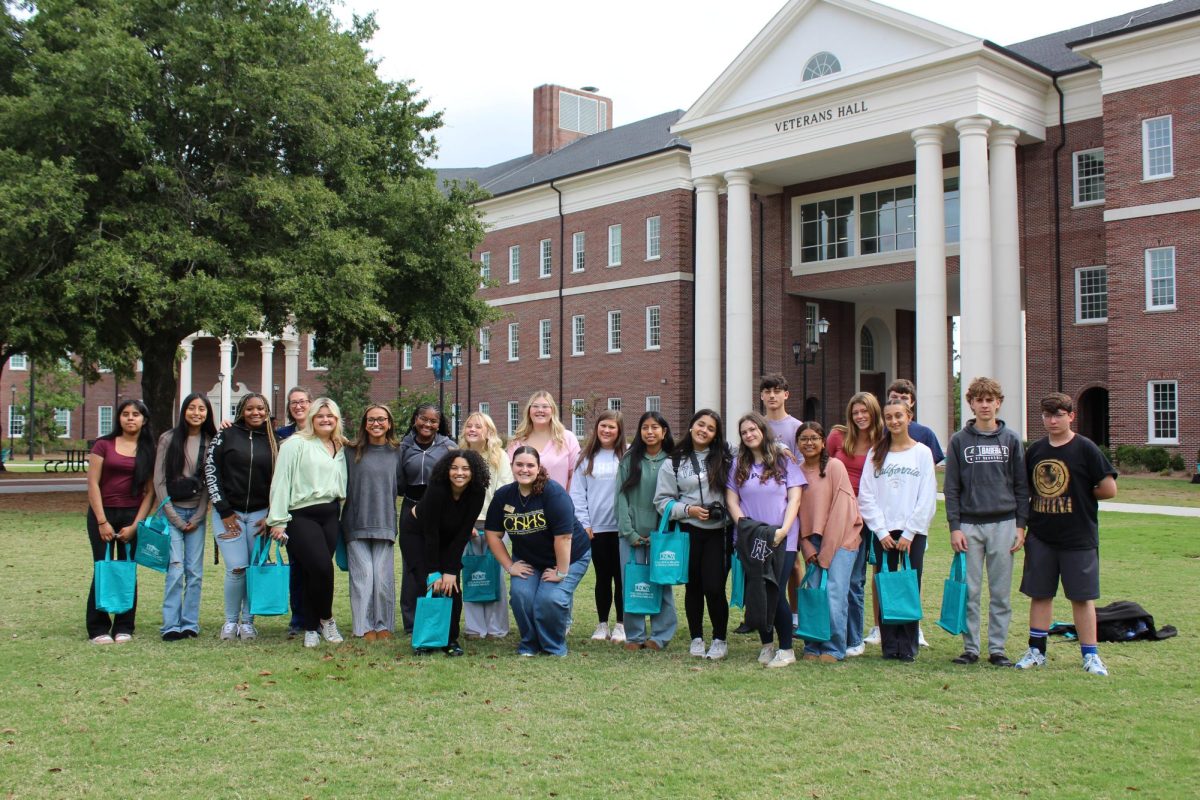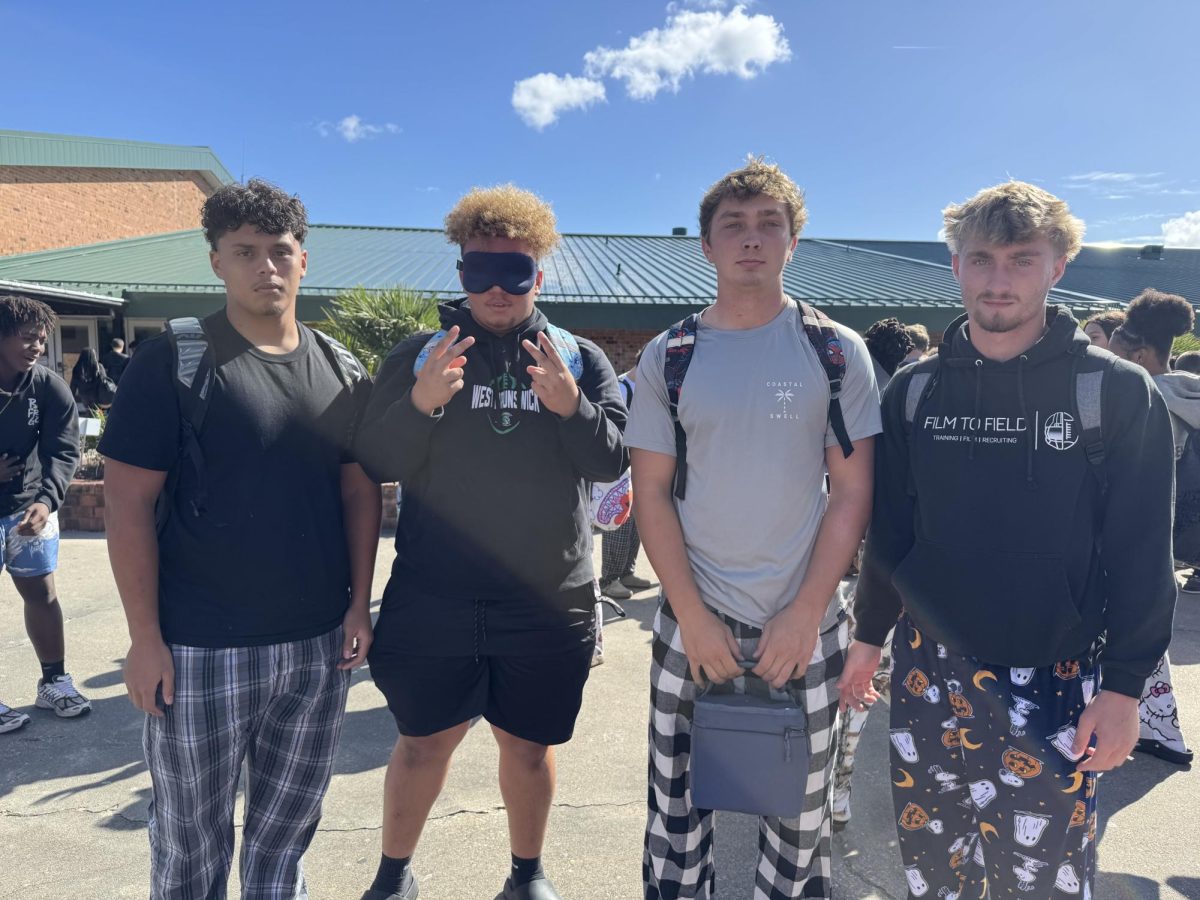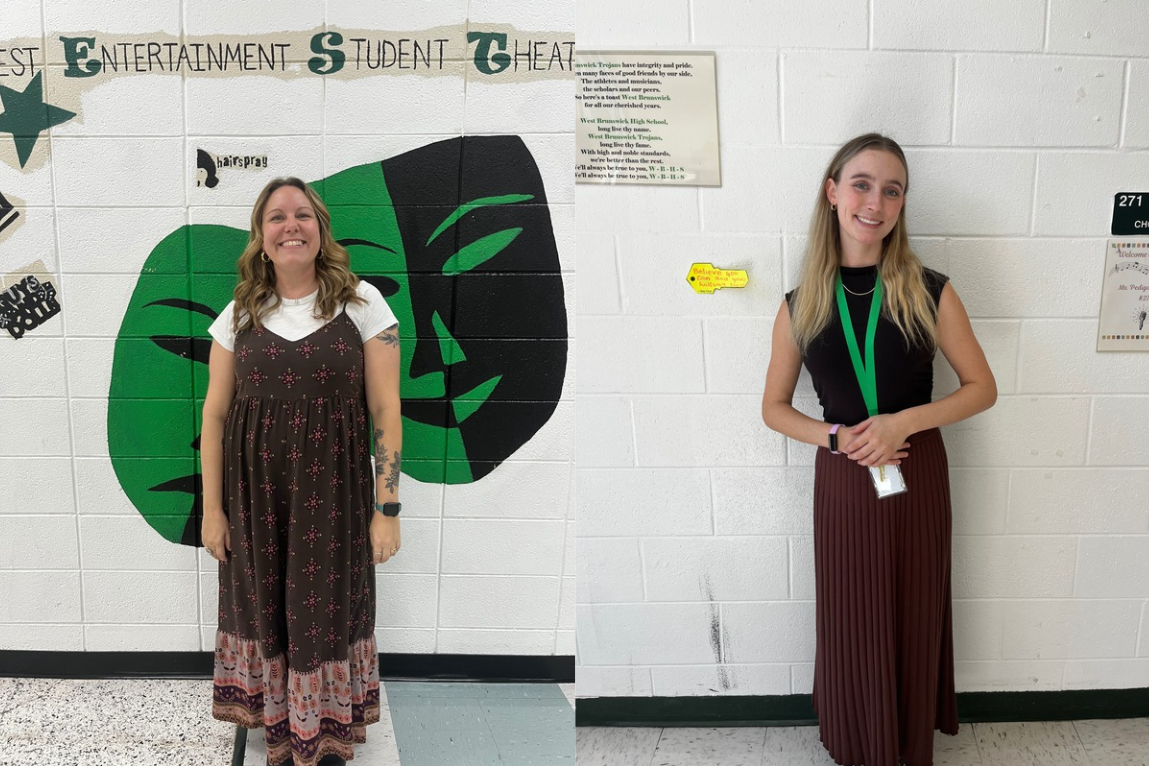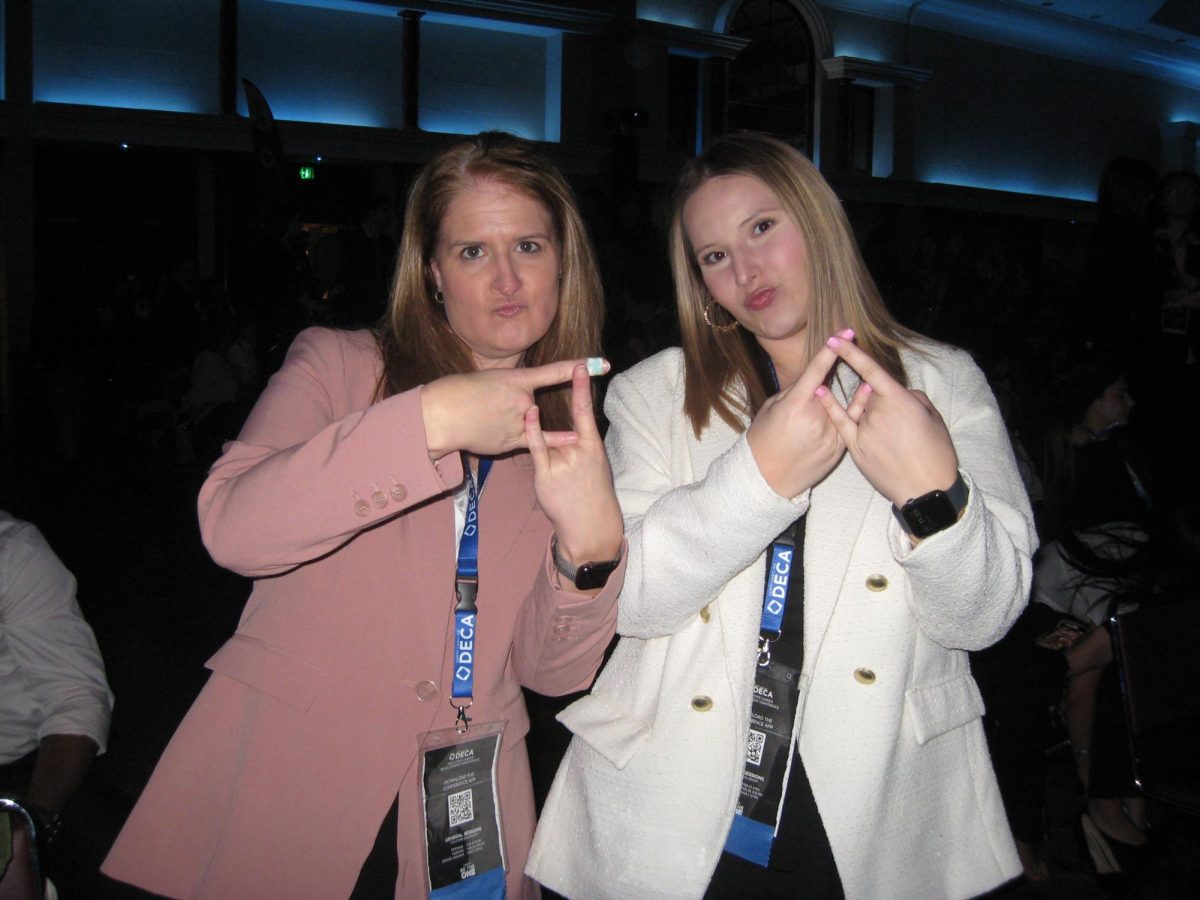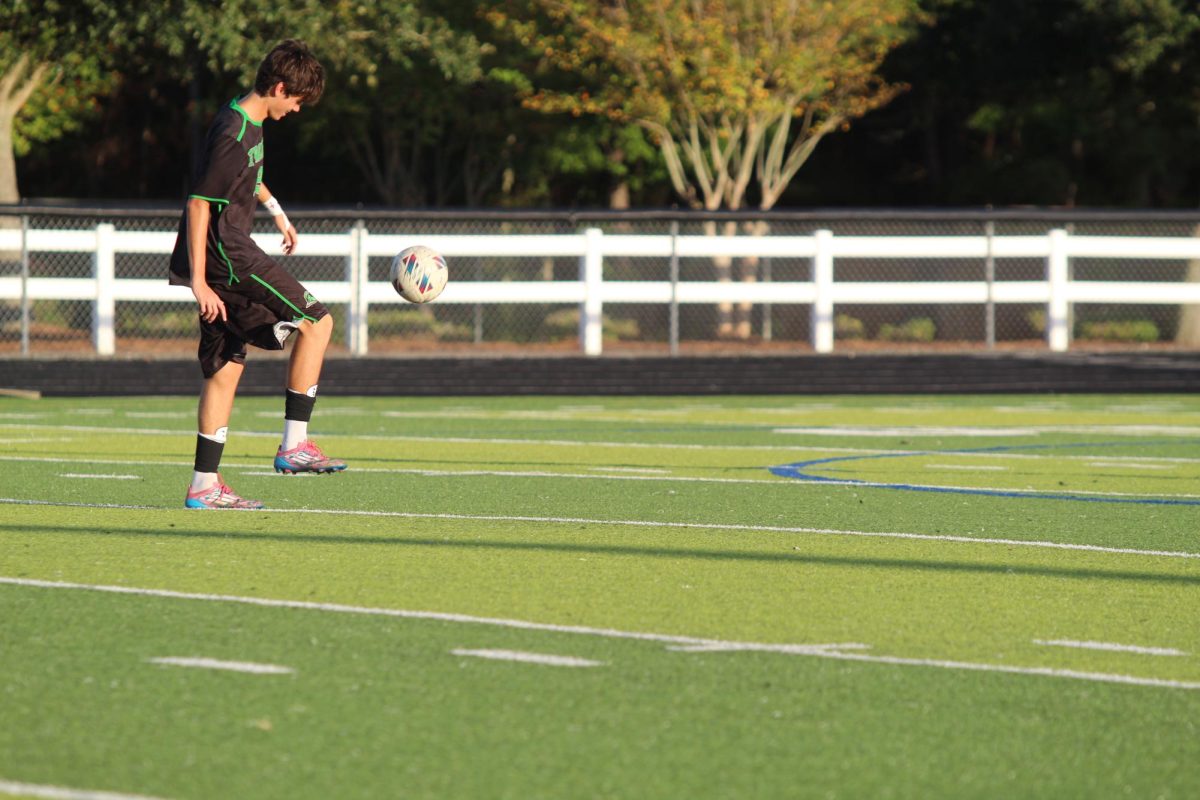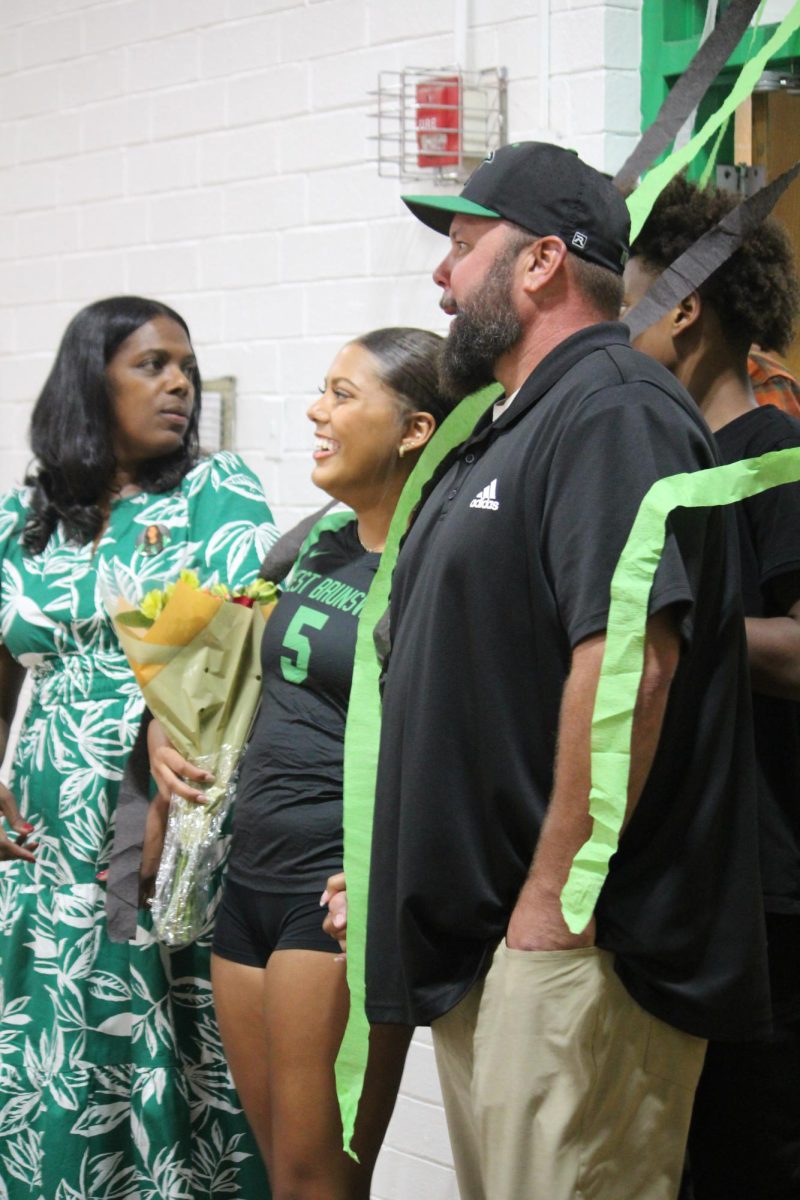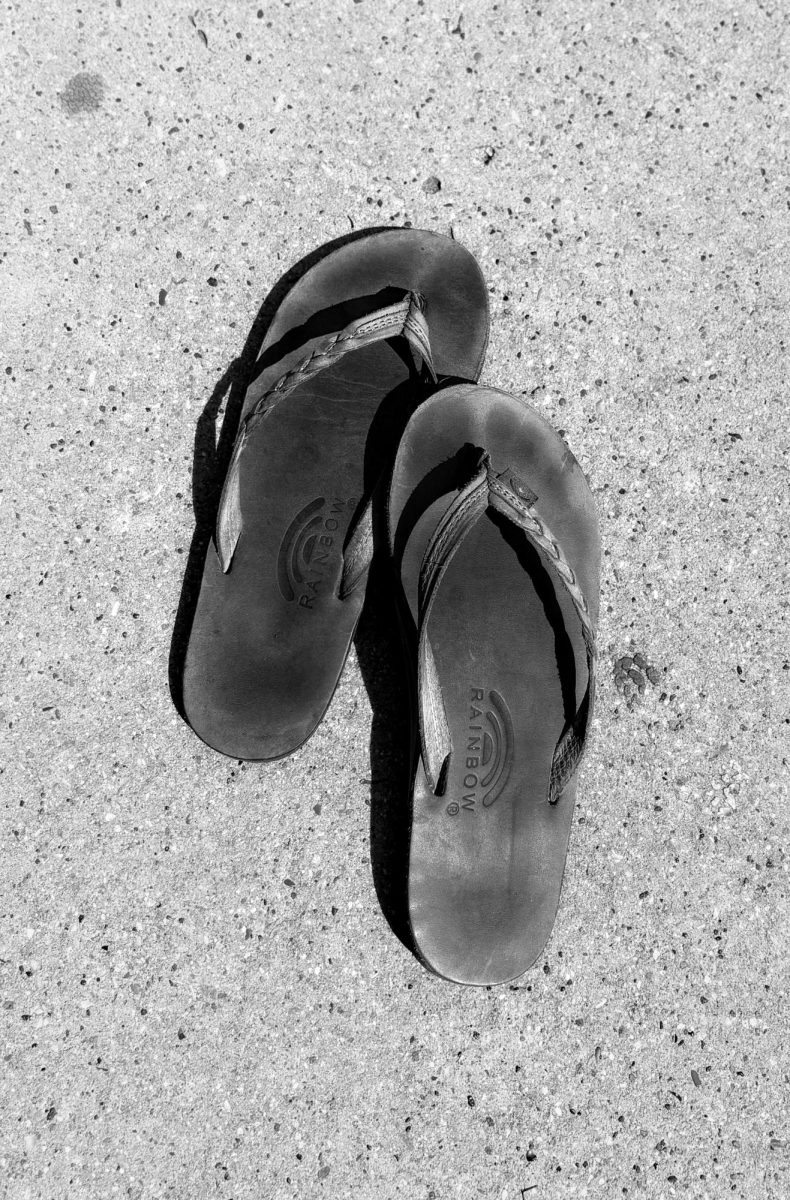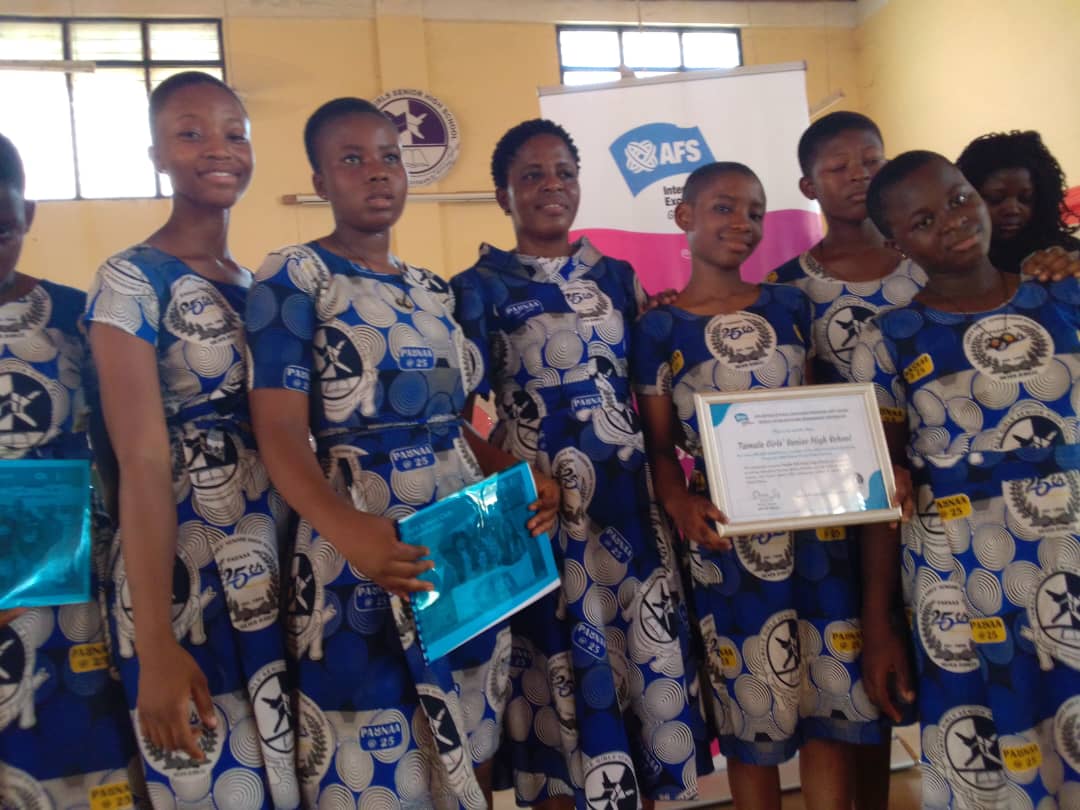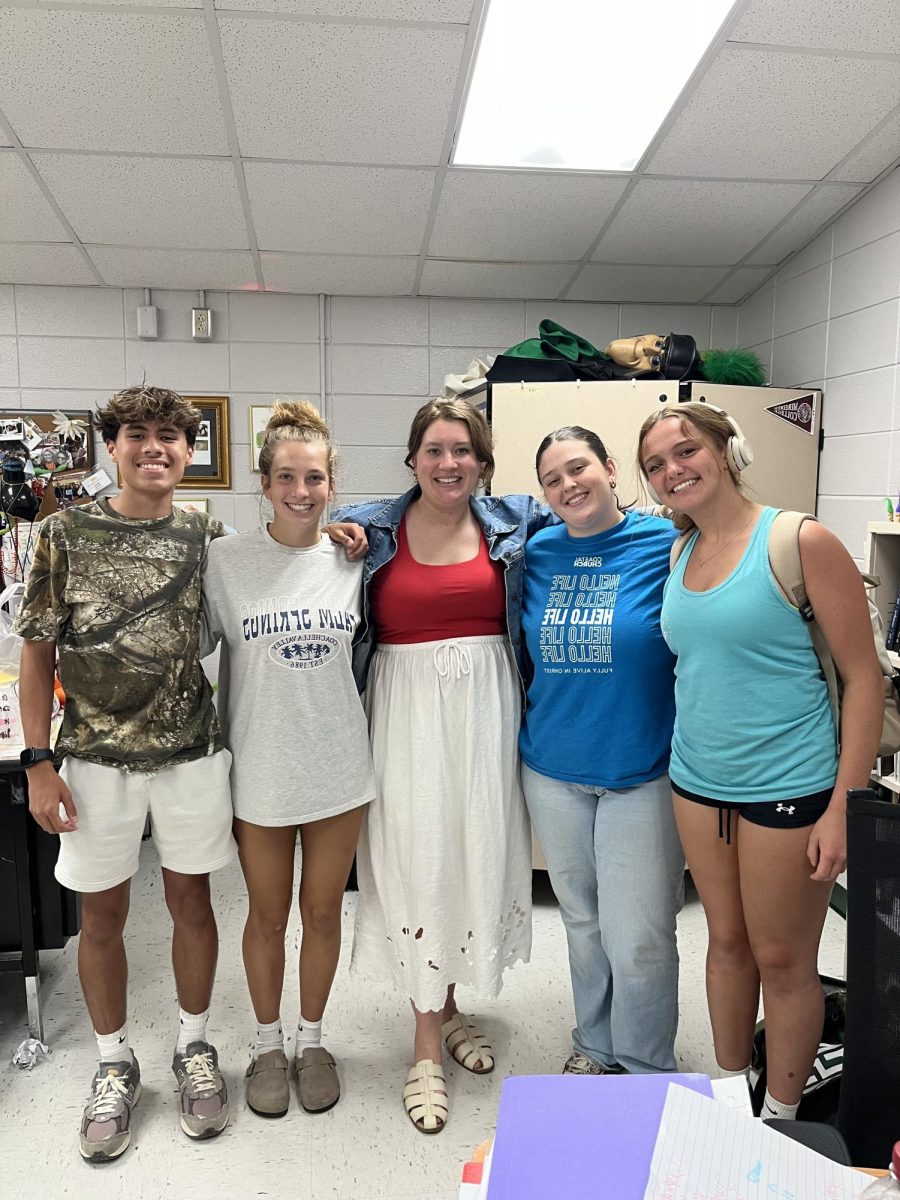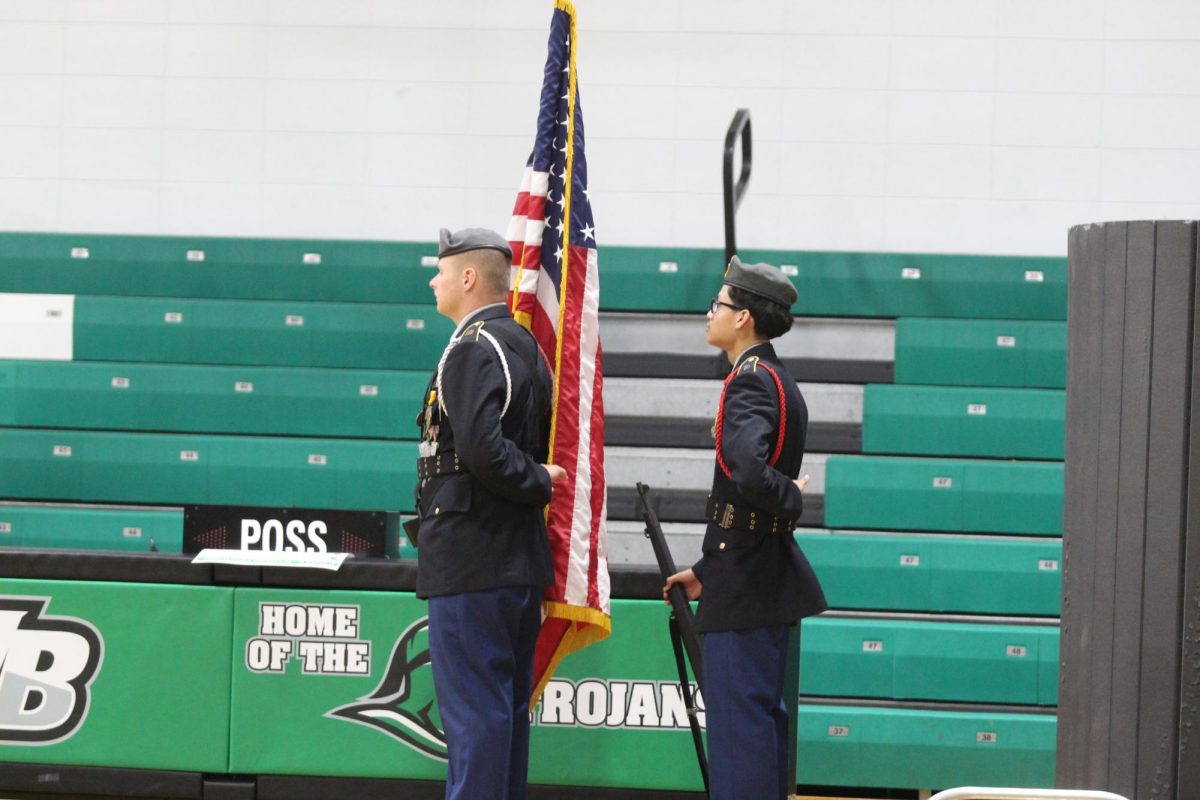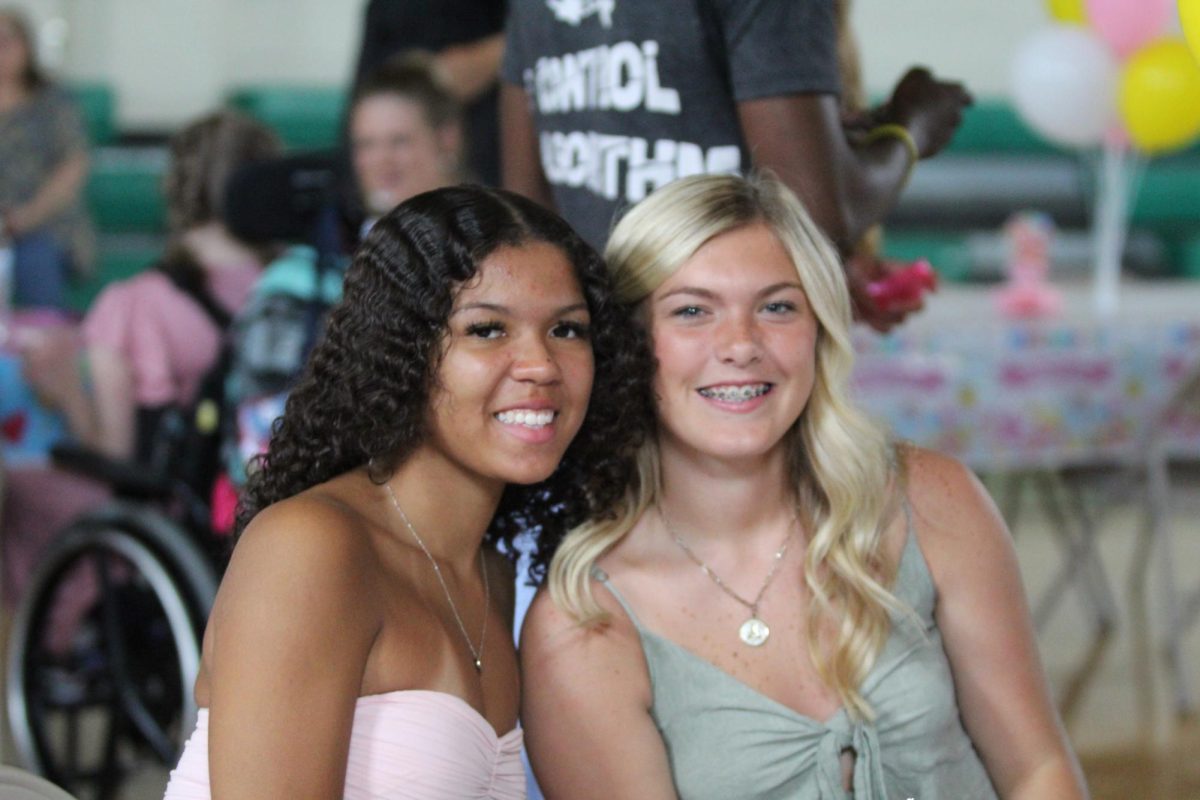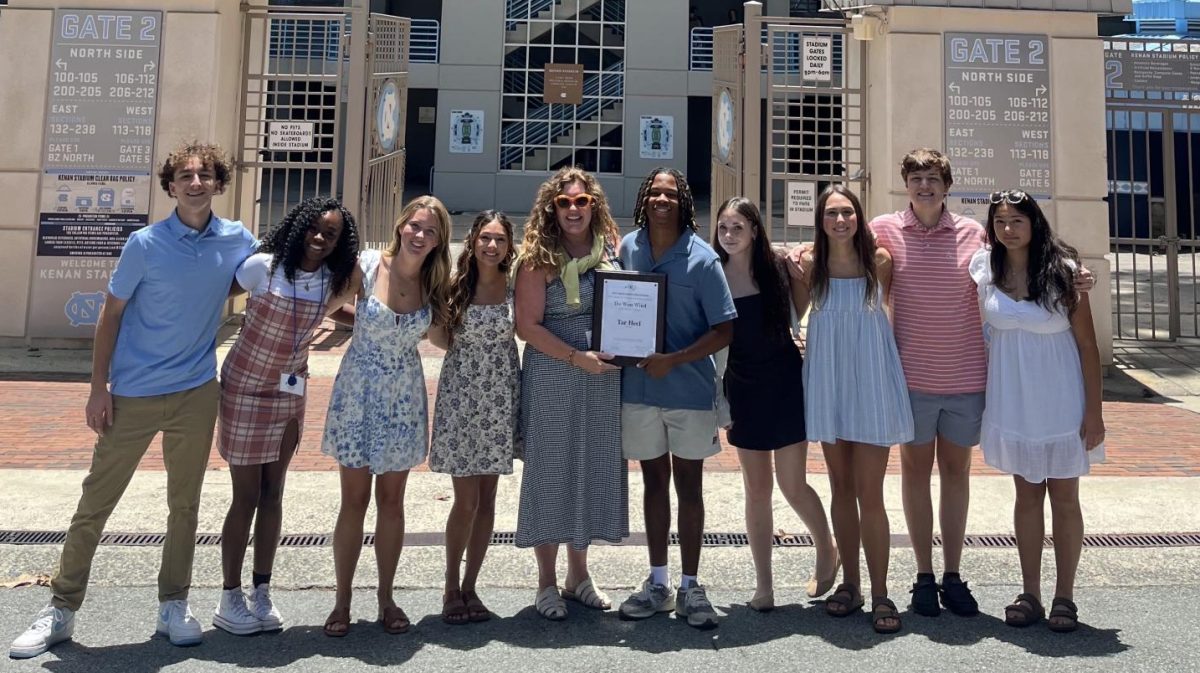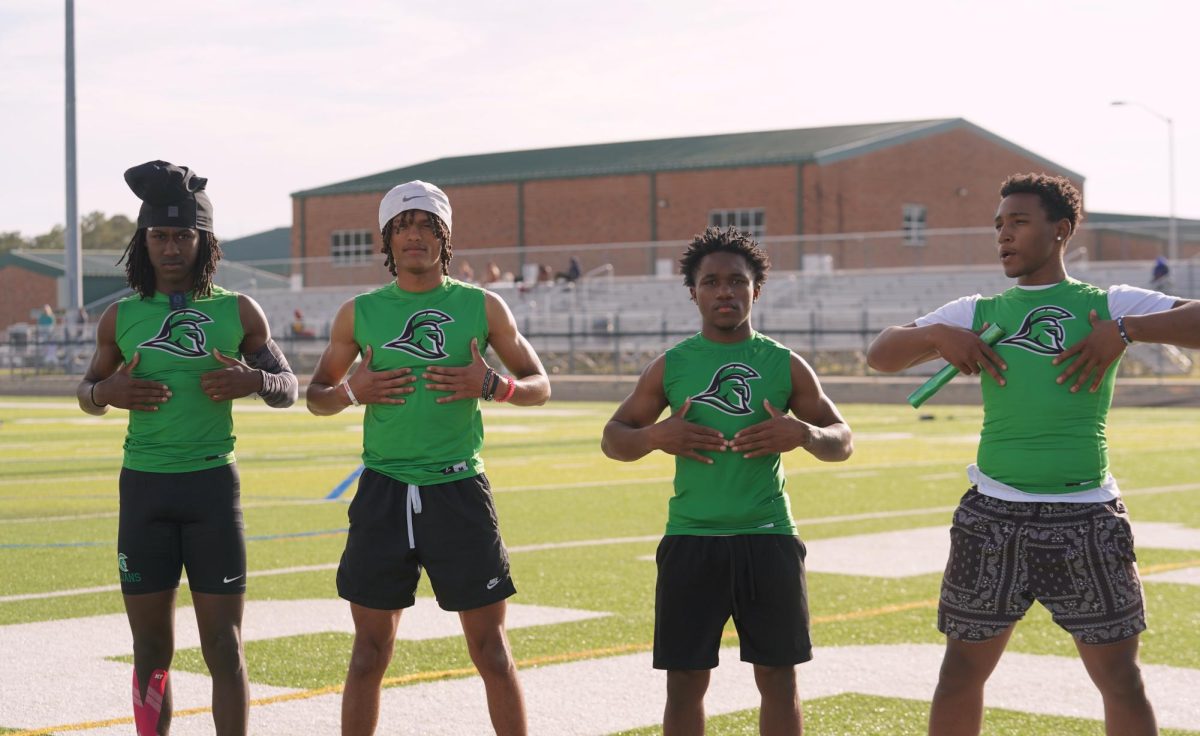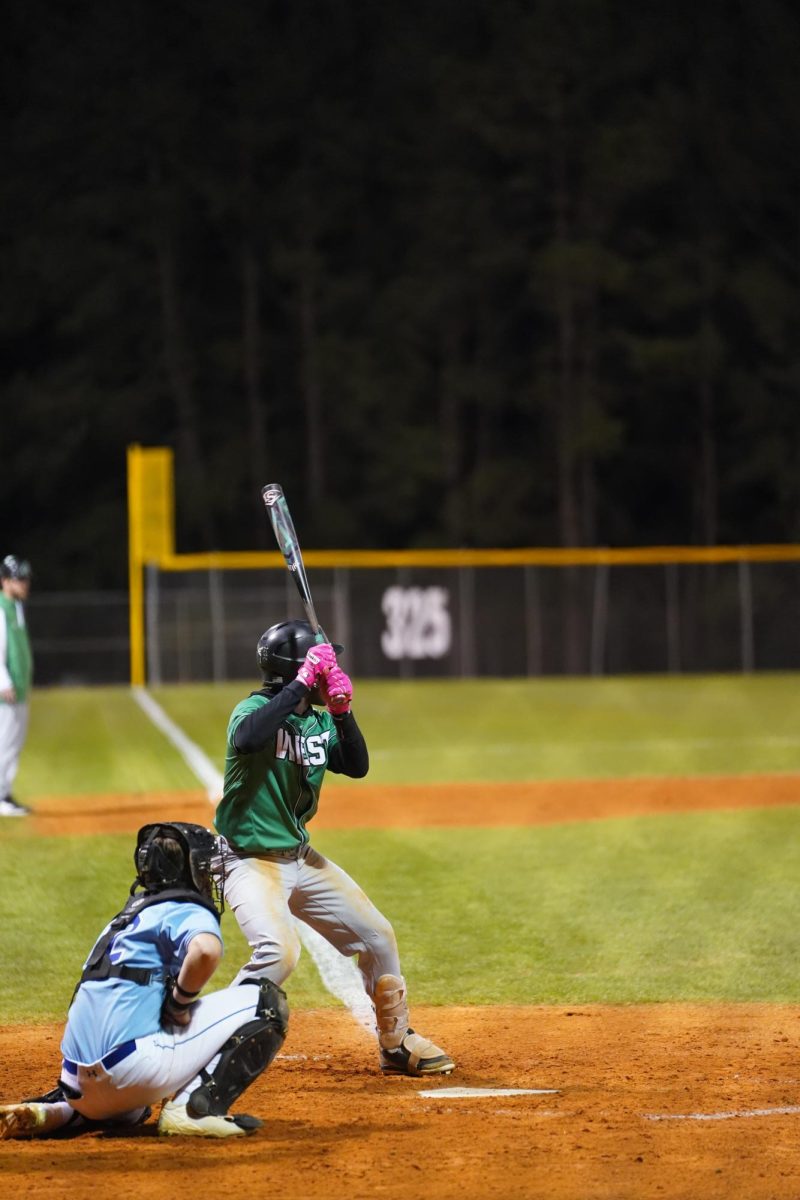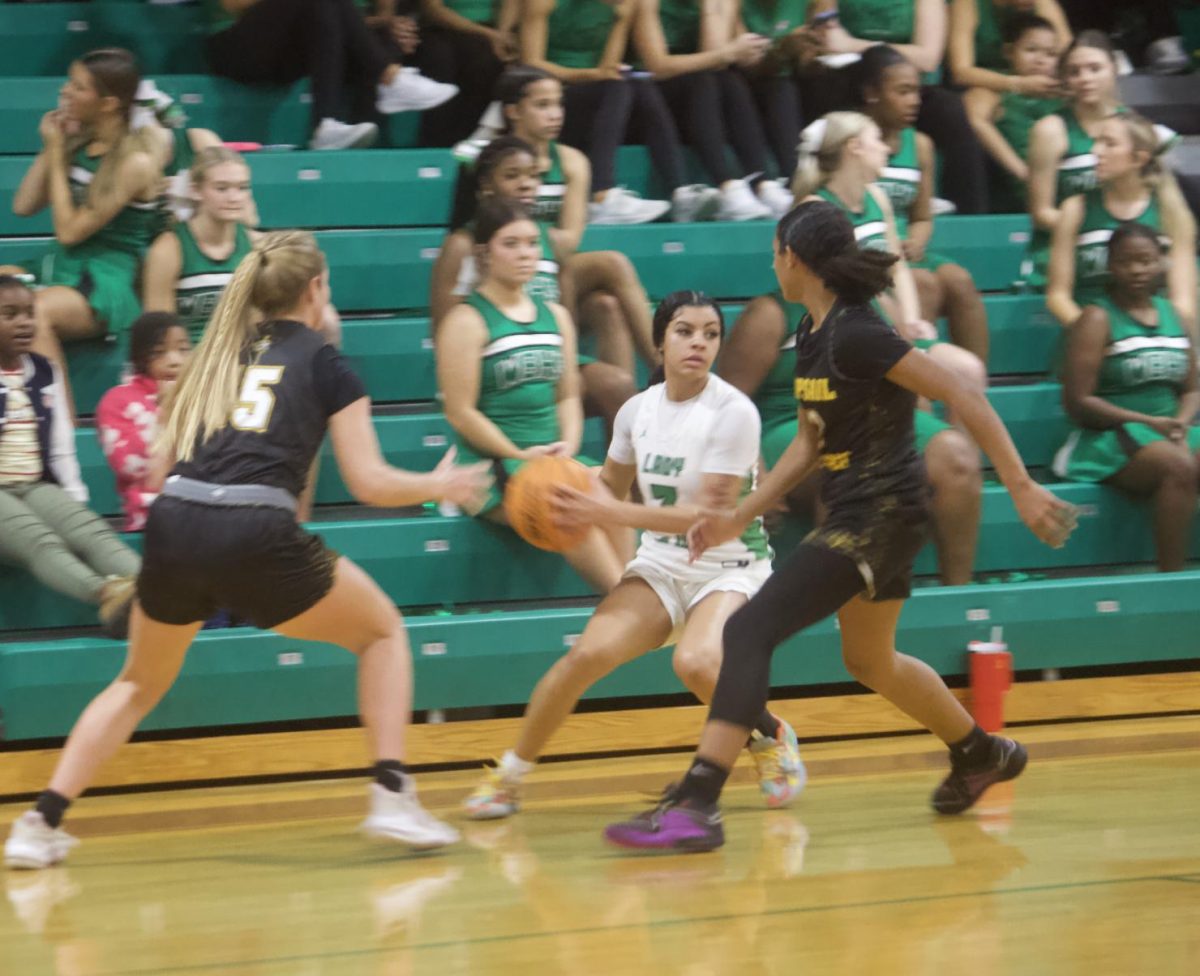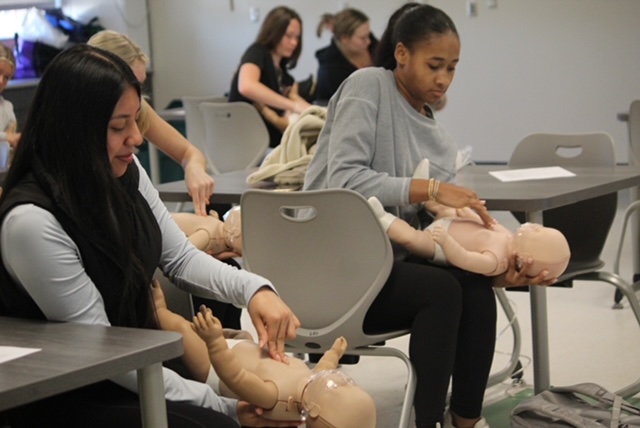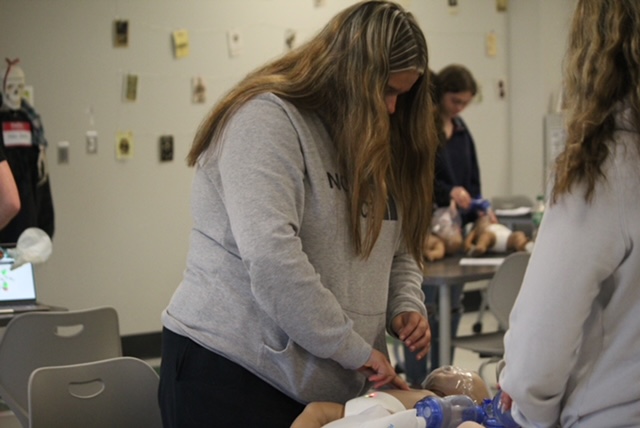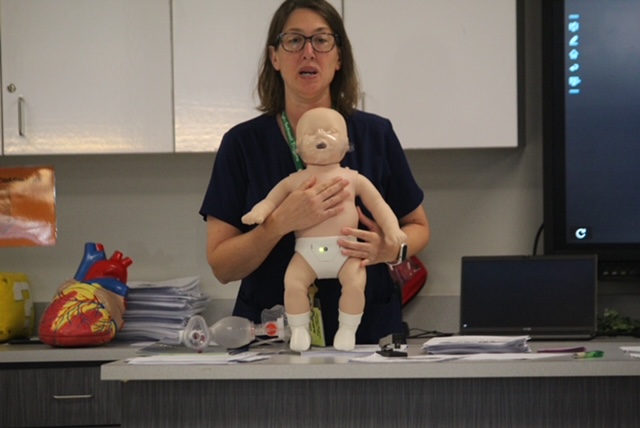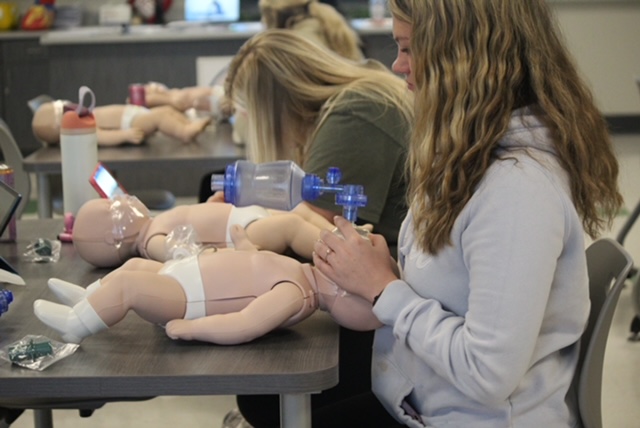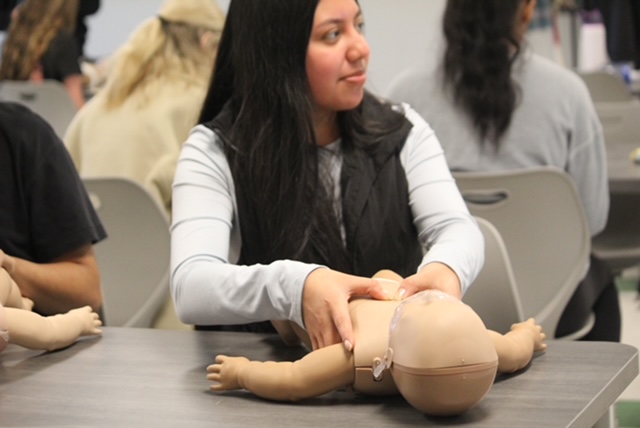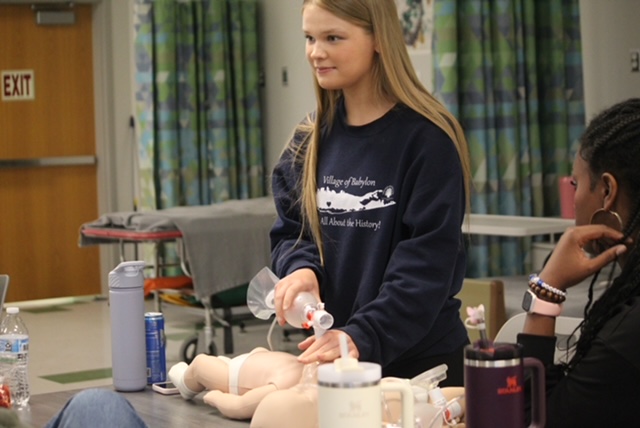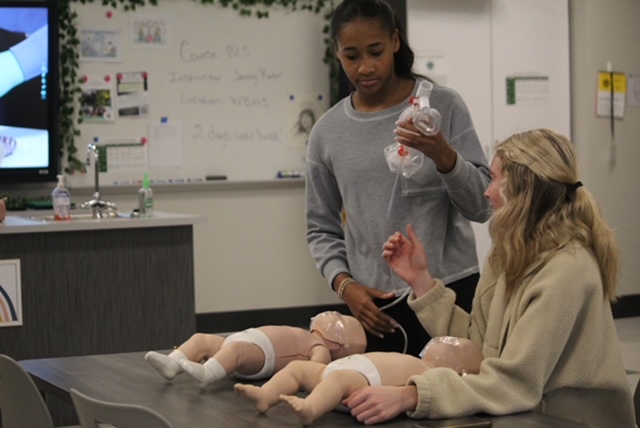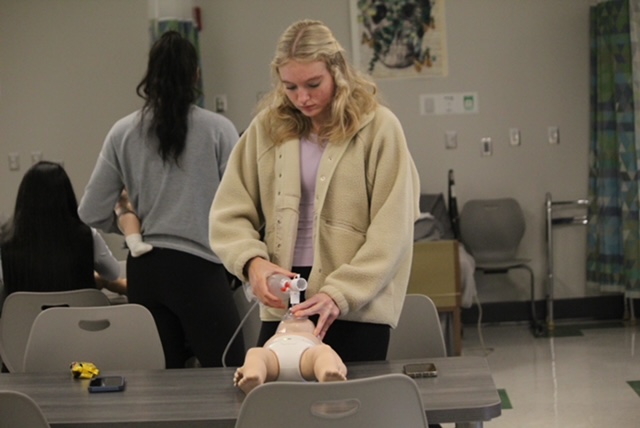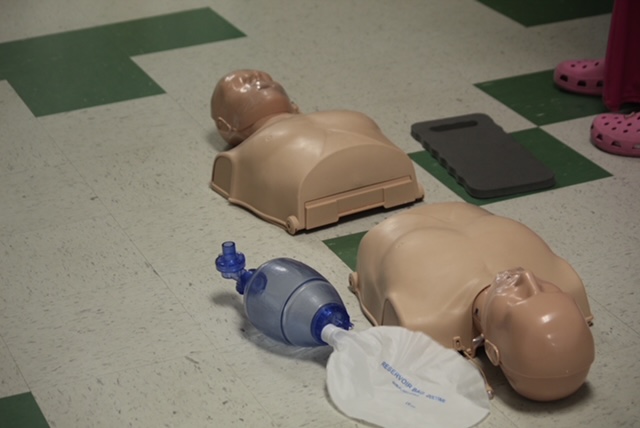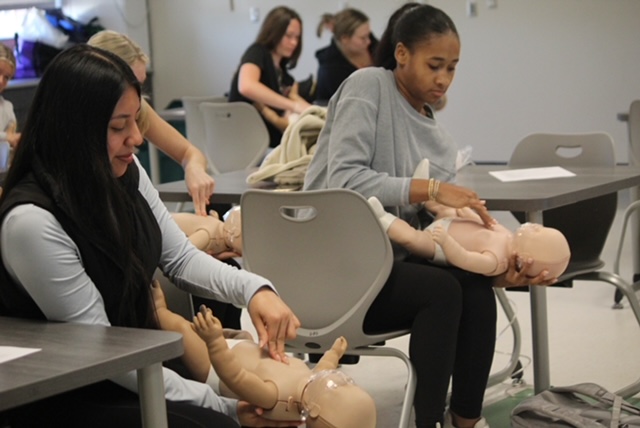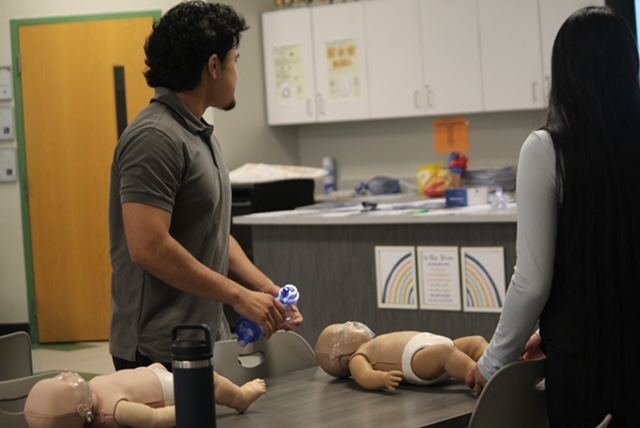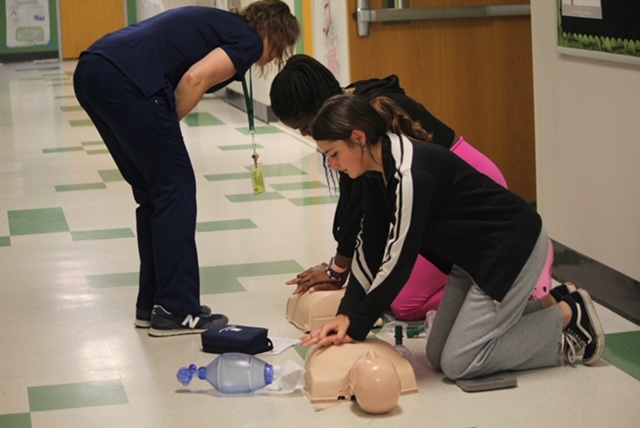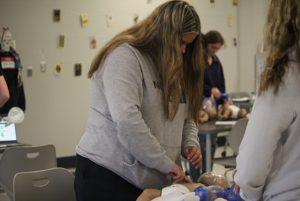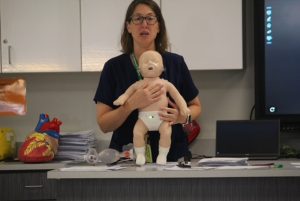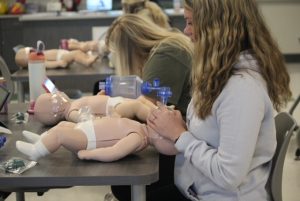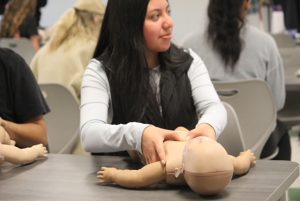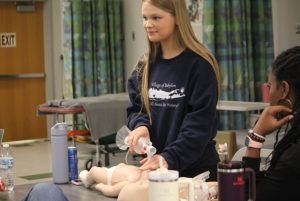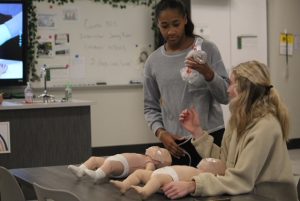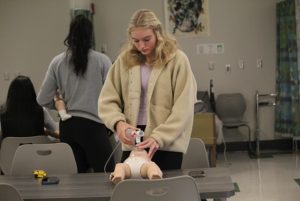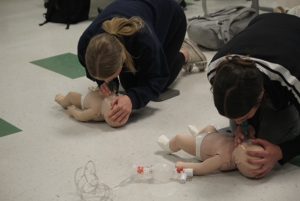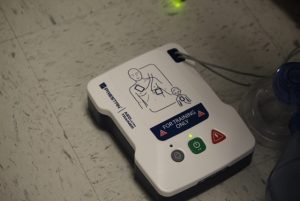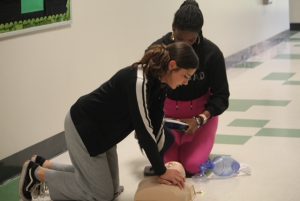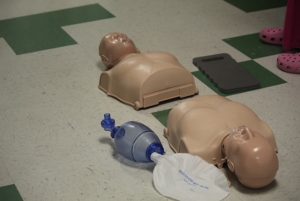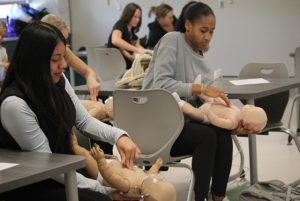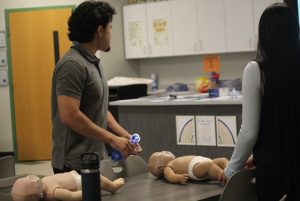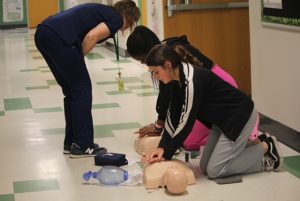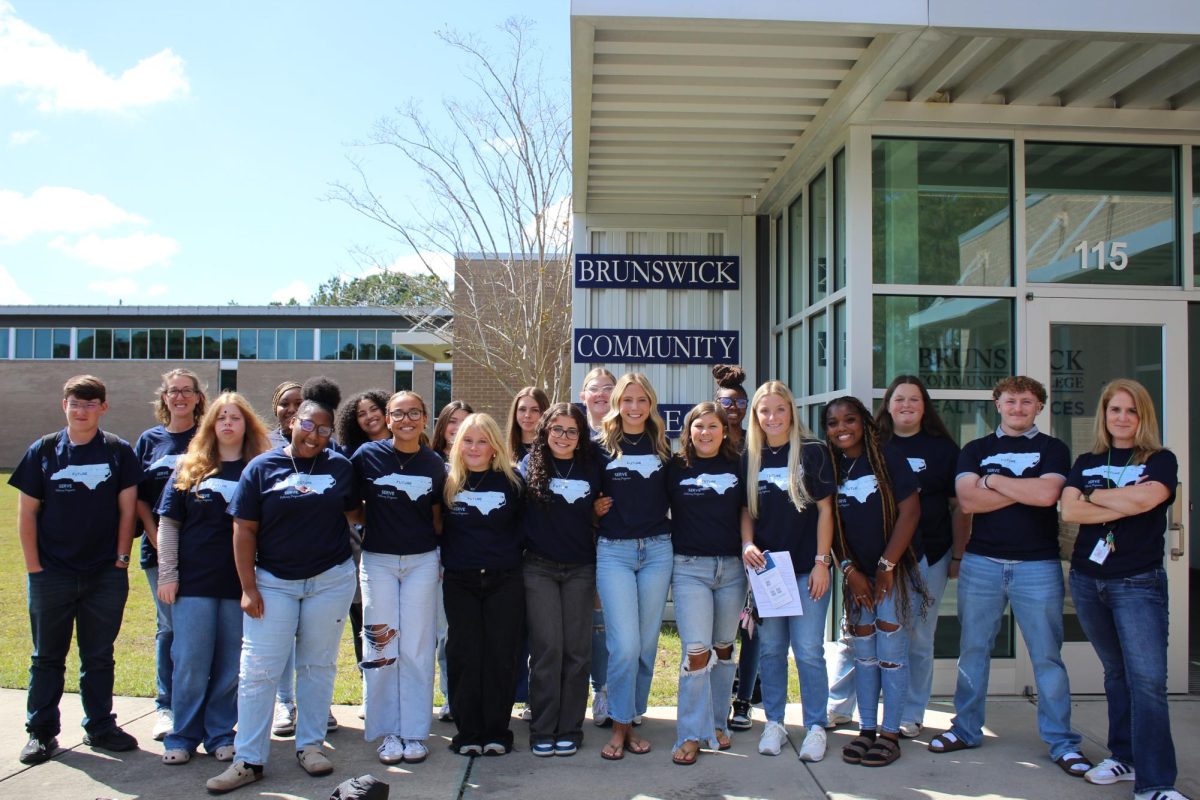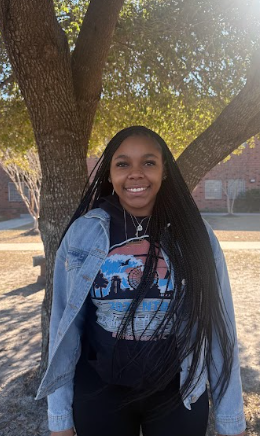Imagine carrying the weight of trying to save a life in your hands; that’s exactly what Health Science II students are simulating as they begin their Basic Life support course (BLS). This course is very important for students pursuing careers in healthcare. The training provides students with essential skills to respond successfully in emergency situations.
“Students in this class are usually pursuing a career in healthcare, and taking this course prepares them for the next step in their journey,” said Health Science teacher Jenny Rohr. “I hope students learned how to respond confidently in a cardiac emergency.”
The BLS course covers a wide range of life-saving skills, with one of the most important skills being cardiopulmonary resuscitation (CPR) for adults and infants. CPR helps someone when their heart stops or when someone is having trouble breathing.
“CPR taught me how to react quickly in a high stress situation and how to resuscitate someone if they happen to pass out”, said Junior Syonna Smith. “I absolutely recommend learning CPR. It really will help in a real life situation”.
In addition to CPR, students also learn how to recognize the signs of cardiac arrest, like unresponsiveness or abnormal breathing patterns. They have extensive practice with the proper hand placement and rhythm during chest compressions using lifelike (and anatomically accurate) mannequins of babies and adults. These compressions help circulate blood and oxygen through the body.
Another part of the BLS course includes training on the use of automated external defibrillators (AEDs), which is a machine that gives the heart an electric shock. Students learn how to operate AEDs the right way, including how to attach electrodes pads, following the voice prompts form the machine, and making sure the area is clear before delivering the shock. AEDs are very common to find in public places like schools, shopping centers, and airports.
The course not only teaches students how to save lives but it also helps students learn to stay calm when things get overwhelming or stressful. These practice sessions help build confidence and prepare students for unexpected situations, helping them gain a sense of responsibility and giving them the tools needed to make a difference when it matters most.
“The fun part about this course was just being able to learn everything in one week was pretty cool,” said sophomore Alyssa Hewett “being able to be certified and knowing that in tough situations, I’m able to do CPR makes me feel good”.
.


